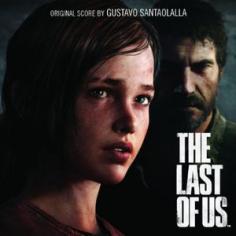Personnel: Andrew Buresh (programming).Recording information: East West Studios, Hollywood, CA; Ocean Way Studios, Nashville, TN. Since the 1980s, Argentina's Gustavo Santaolalla has established a singular reputation as a producer (though he's been active musically since 1969). He's helmed top recordings by Cafe Tacuba, Los Prisioneros, Molotov, Julieta Venegas, and Juanes, to name a scant few. Along the way, he also began scoring films - Amores Perros, 21 Grams, Babel, Brokeback Mountain, Motorcycle Diaries, and more. The Last of Us begins a new chapter for Santaolalla; it marks the first time in his career he's written a score for a video game. The 30 brief cues included here - not everything he's written for the game by far - are mostly sparse, haunting sketches using the guitar as the central instrument, with various keyboards illuminating his evocative melodies. They evoke the nature of a post-apocalyptic world where there is little left in the way of life, and what there is, is sinister, dangerous, tragic, and foreboding, yet not without hope. This is no mean feat. Santaolalla performed most of the music himself, but there are several intense, percussion-heavy tracks including the original title theme, "The Hunters," "By Any Means," "I Know What You Are," and "Infected." Elsewhere such as on "The Last of Us (Never Again)," "All Gone (No Escape)," "Vanishing Grace (Childhood)," and "Returning," chamber strings play a captivating, balancing role, though they never overcome the guitars, charangos, basses, etc. "The Path" and "The Path (A New Beginning)" touch on the scores of Italian spaghetti westerns, but never lose sight of their Latin harmonic and lyric origins even as they change shape into more pastoral and quietly transcendent themes; their drama remains inherent. Perhaps the most compelling thing about the score is how, even in the midst of suspense, Santaolalla never forgets that it is the melody or circular rhythmic patterns that draw in - and keep - the attention of the listener. The Last of Us


